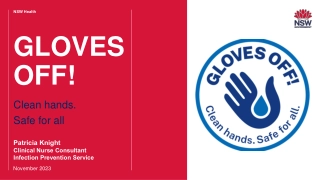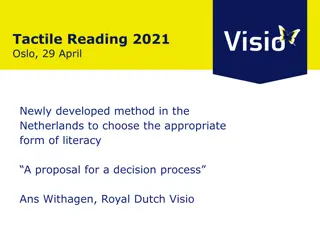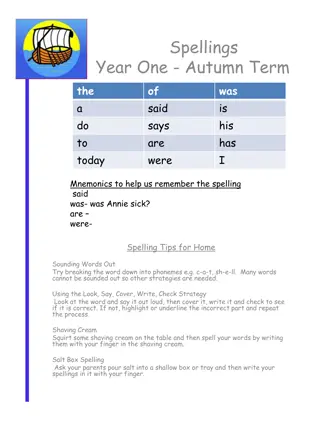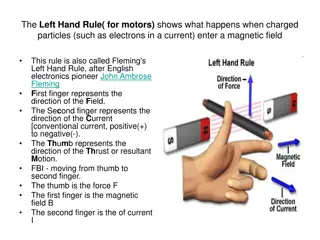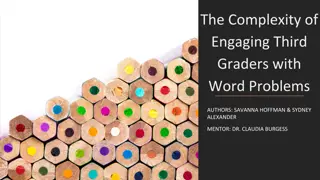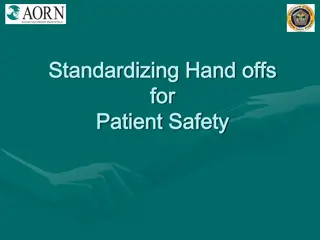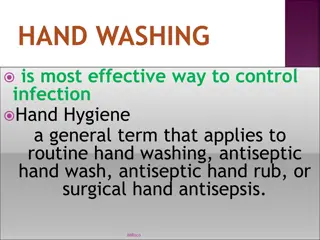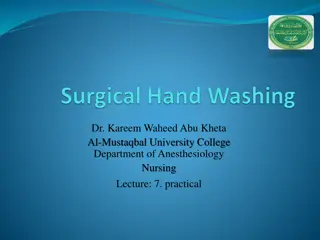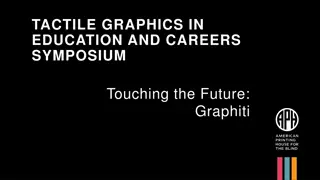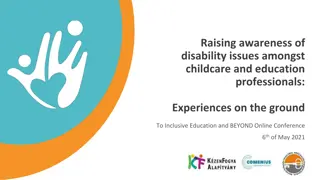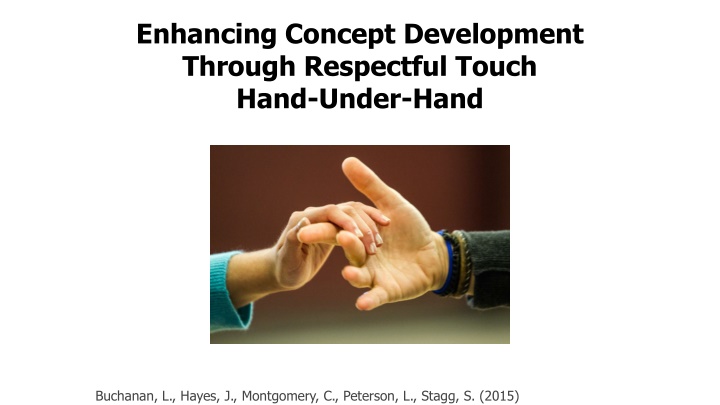
Enhancing Concept Development Through Respectful Touch
Explore the significance of tactile learning strategies and the benefits of hand-under-hand guidance in enhancing concept development. Learn about Project SALUTE and effective communication techniques for students who are deaf-blind. Discover how to promote engagement through gentle touch and supportive interventions.
Download Presentation

Please find below an Image/Link to download the presentation.
The content on the website is provided AS IS for your information and personal use only. It may not be sold, licensed, or shared on other websites without obtaining consent from the author. If you encounter any issues during the download, it is possible that the publisher has removed the file from their server.
You are allowed to download the files provided on this website for personal or commercial use, subject to the condition that they are used lawfully. All files are the property of their respective owners.
The content on the website is provided AS IS for your information and personal use only. It may not be sold, licensed, or shared on other websites without obtaining consent from the author.
E N D
Presentation Transcript
Enhancing Concept Development Through Respectful Touch Hand-Under-Hand Buchanan, L., Hayes, J., Montgomery, C., Peterson, L., Stagg, S. (2015)
Tactile Learning Strategies In the early 2000s, Deborah Chen and June Downing, professors at California State University, Northridge, worked on a project to identify tactile learning strategies for students who are deaf-blind. The project, called Project SALUTE (Successful Adaptations for Learning to Use Touch Effectively), was funded by the U.S. Department of Education.
Hand-Under-Hand Guidance You will learn about hand-under-hand guidance in your reading, Talking the Language of the Hands, to the Hands. It is a less intrusive strategy than the often used, hand-over-hand guidance. Then watch Barbara Miles webcast on Perkins Elearning. Talking the Language of the Hands to the Hands, Barbara Miles https://www.nationaldb.org/media/doc/hands-to-hands-english.pdf Perkins Webcast: Barbara Miles -Reflections on Deaf-Blindness: Hands and Touch the whole thing is fabulous, but if you don t have 20 minutes, especially chapter 5 and 6: https://perkinselearning.org/videos/webcast/reflections-deafblindness- hands-touch (Chapter 5 starts at 12:45)
Hand-Under-Hand Guidance Copy of Hand under hand playing guitar Intervener supports student in music class with hand under hand and tactile modeling Let s watch the video of Cora and Suzanne. Notice how Suzanne encourages Cora s involvement with light, hand-under-hand guidance. She gently guides Cora s hand to the guitar. Audio Description
Things Communication Partners Can Do to Promote Hand-Under- Hand Guidance Invite the student to touch by simply putting your hand gently under his hand and moving it toward the activity. Allow the student to overhear other people s signed conversations. They can do this by touching the hands of the persons involved in the conversation as they are signing. Do activities together. Source: Miles, 2003
Hand-Over-Hand Guidance There are times when a partner may need to use hand-over-hand guidance. This may be necessary: with a student who has very limited hand use and needs gentle assistance to handle objects or for a student who needs specific direction on how to place fingers or hands for signing or another task. In these situations, a trusting relationship is essential. The degree of assistance should decrease as the child s active involvement increases. Source: Chen & Downing, 2006
Hand-Over-Hand Guidance (cont.) If possible, avoid all control of a child s hand (except for safety reasons). Every time you take control, you are teaching the child that his hands do not really belong to him, but to others. Children easily learn to be passive and this often gets labeled tactile defensiveness, but really it is a learned behavior. Be aware of the student s reaction to touch. Barbara Miles
Things Communication Partners Can Do to Insure Hand-Over-Hand is Used Appropriately Build on your relationship with her. Make sure all touch is respectful. Fade hand-over-hand assistance as soon as possible. Consider whether there are alternate ways for the student to be involved. Could she hold onto something that touches the object or activity? For example, if it is difficult for her to reach out to trail a wall or touch a landmark, could she hold a drumstick which trails the wall instead? Source: Chen & Downing, 2006
OHOA Deaf-Blind Intervener Learning Modules A national resource designed to increase awareness, knowledge, and skills related to the process of intervention for students who are deaf-blind. Developed by National Consortium on Deaf-Blindness. For more information, contact NCDB at info@nationaldb.org. The contents of this presentation were developed under a grant from the U.S. Department of Education #H326T130013. However, those contents do not necessarily represent the policy of the The Research Institute, nor the US Department of Education, and you should not assume endorsement by the Federal Government. Project Officer, Jo Ann McCann.


